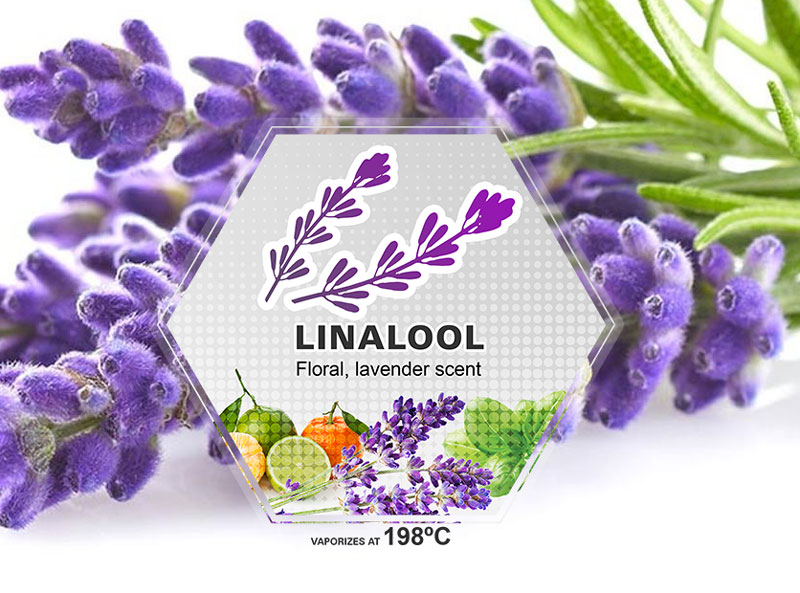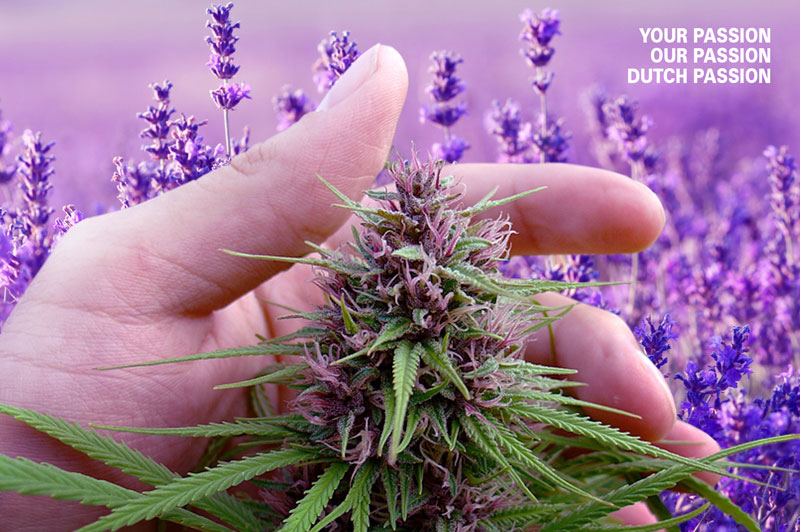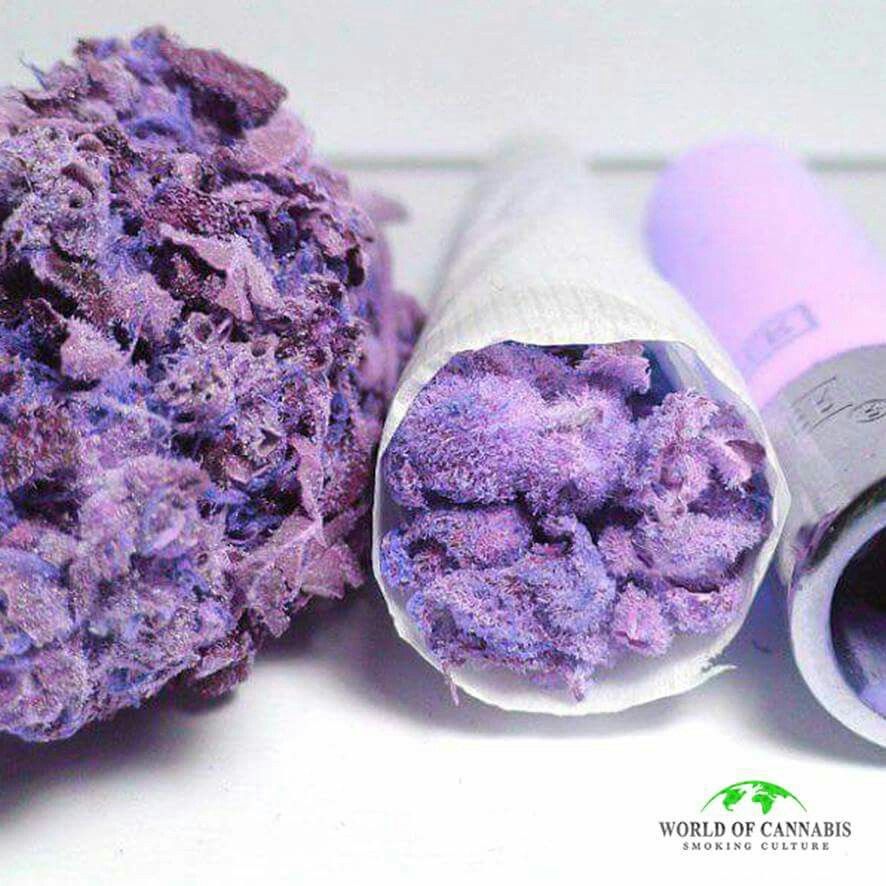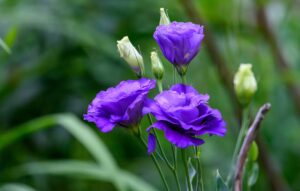
Linalool... is a common cannabis terpene displaying a floral aroma with spicy undertones. The soothing characteristics of this terpene have been used for centuries, as linalool is commonly found in lavender, in addition to several other flowers & spices. Linalool is also a critical component in the production of Vitamin E.

Relaxation and stress relief are typical in linalool rich strains. Also known to carry anti-anxiety, analgesic and anti-inflammatory properties, linalool can also aid with insomnia due to its sedative nature. Linalool has a calming effect on the body and mind, acting as a potent muscle relaxer and possible antidepressant, antipsychotic & anticonvulsant. Cannabis based topicals will often contain linalool due to its soothing nature.
It has more sedative effects and is often found in Indica dominant varieties. Linalool often smells like lavender and sweet flowers, pairing perfectly with that bath!

Theraputic Values:
⦁ Anti-Inflammatory and Pain Reducer: Linalool is useful for dampening overractive responses to injury or sickness.
⦁ Anti-Epileptic: Linalool is "very powerful in it's anticonvulsant quality"
⦁ Stress Reducer: Linalool inhalation has been shown to act as an anxiolytic (anxiety reducer) and may boost immune system performance.
⦁ Vampire Deterrent: Linalool can deter mosquitos with 93% efficiency.
⦁ Sedative: Linalool can improve sleep and increase energy the following morning!
⦁ Anti-Microbial Modulator: Linalool may improve anti-microbial properties.

Pain relief
Studies suggest linalool has anti-inflammatory properties potentially useful for dampening an overreactive response to injury or sickness. In one study, scientists even treated edema in rats with essential oils containing linalool
A paper published in Cannabis and Cannabinoid Research found that 81 percent of a 2,897-subject survey said cannabis alone worked better to manage chronic pain than opioids in conjunction with cannabis.
The trend holds up in Canada as well. In 2017, a study in the International Journal of Drug Policy discovered 53 percent of 271 cannabis patients had replaced opioids with weed. Another 2017 survey, also conducted in Canada, found that 80 percent of 500 chronic pain patients substituted their pharmaceutical painkillers with cannabis.
The pain killing power of cannabis does not come from any single cannabinoid. More often that not, the medicinal benefit can be attributed to the action of a terpene. Linalool is a terpene of interest when it comes to killing pain.
Linalool acts as both an anti-inflammatory and a pain killer. It can be used to treat arthritis and cancer pain. Other conditions for which the healing powers of linalool could be of benefit include: MS, chronic pain, and dystonia. Linalool also has sedative properties that can help with insomnia. Have you ever fallen asleep to the scent of lavender? That’s linalool!
 Anticonvulsant properties of linalool
Anticonvulsant properties of linalool
Linalool is a monoterpene compound, commonly found as major component of essential oils of several aromatic species, many of which are used traditionally as sedatives. evaluation of linalool in mice revealed that this compound has dose-dependent marked sedative effects at the CNS, including protection against pentylenetetrazol, picrotoxin, quinolinic acid and electroshock-induced convulsions, hypnotic, and hypothermic properties.
The fact that anticonvulsant effects of linalool can be attributed to both an inhibition of potassium-stimulated (but not basal) glutamate release in cortical synaptosomes, and antagonism of NMDA receptors, deserves further investigation as a strategy for antiepileptic-drug development. CBD displays similar anticonvulsant traits, making linalool a vital contributor to the whole plant medicinal effects of cannabis.
As the understanding of cannabinoid and terpene complexities are constantly evolving, linalool’s long well known healing and relaxing effects are certainly worth seeking out when exploring different cannabis strains.
Vampire repellant
Mosquitos are one of the most prolifically breeding insect species on the planet, but you can keep these pesky insects at bay using linalool for peace of mind to enjoy your fair summer night.
In a 2009 study testing the efficacy of various botanical repellents against mosquitoes, linalool served as an effective mosquito repellent both indoors and outdoors. Indoors, 20g of 100% linalool placed in a diffuser repelled mosquitos by 93%, while outdoor diffusers repelled the potentially harmful insects by 58% within a 6m distance of the diffuser.
Anti-Microbial Properties
Cosmetics and medicines usually require high concentrations of essential oils to maintain their microbial purity. These high levels can cause users with sensitive skin or allergies to suffer reactions and become irritated.
 But studies suggest when you increase the amount of linalool to an existing oil, you can increase its anti-microbial properties without causing these effects.
But studies suggest when you increase the amount of linalool to an existing oil, you can increase its anti-microbial properties without causing these effects.
This study found that anti-microbial effectiveness of oils like S. aromaticum oil and T. Vulgaris oil increased against harmful bacteria like P. aeruginosa, A. brasiliensis, S. aureus, E. coli, and C. albicans when combined with additional linalool.
Researchers believe this is because of the synergistic entourage effect that occurs when effects are greater from combined compounds ( like terpenes ) than when we use compounds individually.
Final Thoughts on Linalool
There is no doubt that linalool offers a wide array of benefits. It possesses antimicrobial and anti-inflammatory properties, improves sleep, reduces anxiety and stress and helps with skin conditions in individuals who are not allergic to it. You will find it in dozens of essential oils, including lavender, which means it is easy to find.
However, oxidized linalool can cause allergic reactions in a certain percentage of the population, and side effects include skin conditions such as eczema and contact dermatitis. If you use essential oils and are suffering from an allergic skin reaction, perform an allergy test to see if linalool may be the cause.